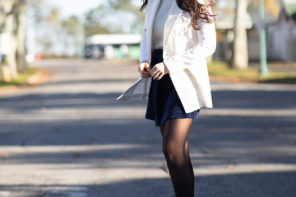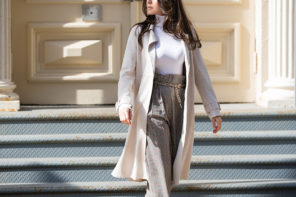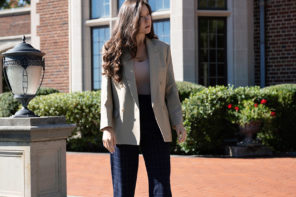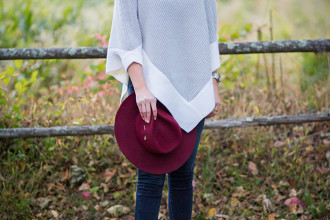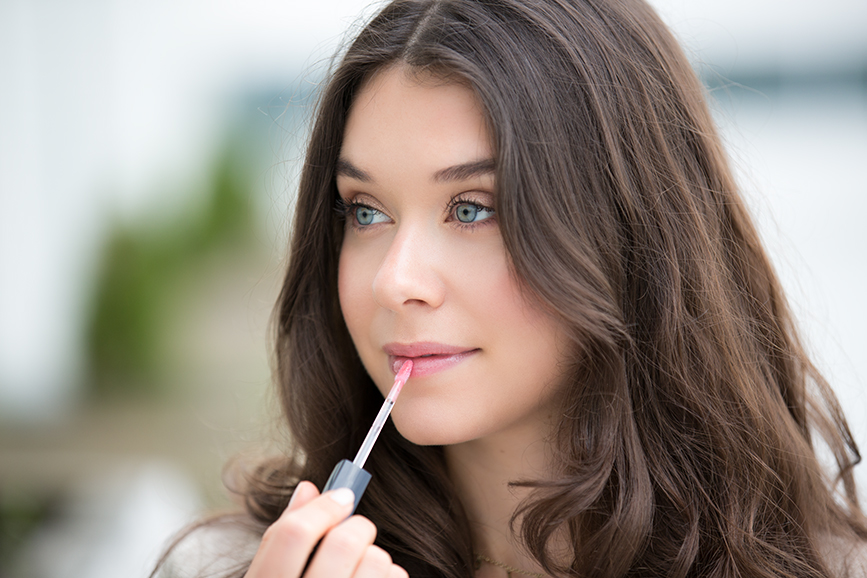
Ever wonder when it is time to toss your favorite beauty products? The start of a new season is the perfect reminder that it is time to clean out your makeup bag! I don’t know about you, but it is very difficult for me to throw away makeup and beauty products especially if they have been with me for a long time. But even if products look like they are still in mint condition, doesn’t mean that is always the case. I definitely don’t want to risk a reaction to using products with an expired shelf life, especially because my skin is extremely sensitive. It is not always clear when the time is right to toss your favorite foundation or your shower products and replace them with new ones. Products do have an expiration date and it is important to do a seasonal cleaning of the products that you constantly use. My dermatologist explained to me that using expired products can be very harmful and troublesome to your skin. My doctor also explained the process of how to know if your beauty products are expired! Old products can decompose and the chemicals in your products can separate and cause problems to the skin! Irritation and even burnt skin can be side effects of old products! Not only do the products decompose, but they can also harbor harmful bacteria which can infect and re-infect your skin with every use.
Gross, right? Well, with the help of my dermatologist I received the inside scoop on what you should look for when you are considering ditching your product or if you want to know if your products are healthy to continue using. Follow these general rules and you should be in the clear: 1. If your product appears to look different than when you first opened it, throw it away. 2. If there is a change in your products texture, color, smell or if the product has started to separate, throw it away. And lastly, 3. If you used a product or tool (like a makeup product that has an applicator built into it) over an infected area and you cannot properly sanitize that product or tool- Throw. It. Away! This last rule is something that most of us don’t even think about, but it is very important to consider. Here is a scenario in which you should throw away a product that cannot be properly sanitized – Say you use a creamy concealer that has a doe foot applicator built into the product, to conceal your pimples. If you use that applicator directly on the pimple to apply the product and then place the applicator back into the tube that holds the concealer- you are not only infecting the applicator with bacteria. You are also infecting the actual product that lives in the tube because you have placed the applicator back into the tube. I always recommend using the applicator to place some of the product on the back of a clean hand and then either use a clean finger or brush to spot treat the area you want to conceal.
This can all get confusing at times, I know! But if you want to know specifically how long to keep your coveted beauty products, and some of my favorite go-to products in each category, scroll down to read more:
Sunscreen
As I mentioned in my blog post about my favorite sunscreens, I don’t need to remind you how important it is to wear sunscreen all year round. But most people won’t reach the bottom of their big bottle of sunscreen quickly –especially if you are only applying a thin layer on the face.
Shelf Life: Sunscreen can last for around 2 years, depending on the quality of your sunscreen. They tend to have a long shelf life and should be effective for about 2 years after opening. However, exposure to heat, when the bottle is left in the sun on your beach chair, can cause the active sunscreen agent to break down quickly and change the consistency of the sunscreen.
How to tell if it’s bad: If the sunscreen starts to smell funky and the texture and color changes – step away.
Shampoo
We all use shampoo (I hope)! If you like to use new shampoo often, you are left with half-empty bottles that sit around. But, unlike most beauty products, shampoo lasts a long time.
Shelf Life: You can keep shampoo in your shower for a very long time. But, it is important to keep the cap sealed tightly. This will help keep the shampoo from becoming diluted with water and other soap products and it will also help prevent contamination of your shampoo.
How to tell if it’s bad: If you notice that the scent and texture is off after you use the product, toss it and buy a new one!
Moisturizer
By now, a moisturizer is part of your daily routine. I couldn’t go a day without using my favorite moisturizer, especially with the temperatures dropping. Most people are pretty loyal to their favorite moisturizer, but you should be equally as dedicated to making sure that your moisturizer is still going strong.
Shelf Life: A good moisturizer should last you up to a year, that is if it does last that long. I usually go through my moisturizer ever 2 months, before I need to repurchase it. But as long as it looks and feels as it did when you first opened the bottle, you’re good to go.
How to tell if it’s bad: Overtime, depending on the conditions you keep your moisturizer, you’ll start to notice a different color and even smell. If this starts to happen, I’m sorry but, its time to say goodbye!
Serums
These powerful drops on your face can make a big difference in your skins texture and overall complexion. While serums do help with aging, they don’t last as long as we would like them to. It is not that they necessarily go bad, its that they lose the good stuff that makes us shell out the extra cash for them from the get-go.
Shelf Life: Serums can last up to a year! While the active ingredients might lose some of their power, like vitamin c, or potency over time, if the product looks unaffected, then it should not be harmful to use.
How to tell if it’s bad: Because of the way that serums are usually packages, there is a very small risk of contamination, as the packaging is usually bottles that dispense the proper amount of product. But like with anything, if something feels or smells off, it probably is.
Foundation
If you have an obsession with makeup and trying new foundations, then I am guessing you have a drawer filled with your favorite foundations. I am also guessing that you don’t use all of them all the time, rather you stick to your favorite foundation and consistently use that one for months. But what about those other foundations that sit in the drawer? Well, after a while they start to break down, clump and separate over time.
Shelf Life: You can keep your coveted foundation for about 1 year before it is time to break-up with it and throw it away. If you have a cushion/sponge style or cream-based foundation, where the product requires you to re-dip your fingers or sponge blenders into it – then it has a 6-month shelf life. Why? Because they are more easily contaminated with acne, causing bacteria.
How to tell if it’s bad: If you notice a smell, change in color or consistency – its time to throw it away.
Blush & Bronzer
I am a blush and bronzer fanatic, so I know what its like to have a few shades that you tend to use in rotation. These are beauty products that can instantly make you look youthful, glowing and fresh!
Shelf Life: Powder blushes and bronzer (and ever powder highlighters) can last a few years if they aren’t broken, while cream or stick blushes can dry out and have a change in consistency much faster. Whether you use cream, powder or stick blushes, just be sure to clean your brushes to prevent breakouts.
How to tell if it’s bad: If the consistency changes and your cream blush gets sticky and completely dry, or if it changes in texture and starts to smell – toss it!
Eyeshadow
Most of us have multiple eyeshadows or eyeshadow palettes because an eye shadow can drastically change your look for every occasion: date night, work or just an everyday eyeshadow look to accentuate your eye shape and color.
Shelf Life: It is important to clean your brushes to keep your eye shadow palettes lasting for years! Yes, years! My number one tip is to always make sure that you are using clean brushes when applying eyeshadow. For one, you won’t be contaminating the eyeshadow with various oils and other harmful bacteria that was left on the brush from a previous use. Also, it will keep your favorite shades clean and free of oxidation, as the natural oils from your skin can sometimes change the color of the shadow. So remember, keep your brushes clean and you should be good!
How to know if it’s bad: Apart from general aging over time, like with any product, the way you use the product can determine its lifetime value. Like I mentioned previously, oils on the eyelids can transfer to the power palette if you ‘double dip’, which can affect the color of the product. This is when you will want to toss your product…which I know can be difficult! But look on the bright side, you’re making more room for new makeup products!
Mascara
As I have mentioned in my previous blog post about my favorite mascaras, I’ve come to the realization there’s one product that remains a staple in nearly every makeup lover’s routine: mascara. But sadly, it doesn’t last as long as other makeup products.
Shelf Life: If you use mascara every single day, or most days, then mascara should only last from between 3-6 weeks.
How to know if it’s bad: You always have to be careful with mascara because of the way its applied how the formula can get so close to the eye. If the product’s applicator comes in contact with the eye or any bodily fluids and then you double dip to reapply the product, bacteria can start to build in the tube. If the products loses its creamy consistency, starts to get dry or smelly or changes color – you know what to do! Throw it away.
Lipstick and Lip Pencils
Some of us don’t feel like the best version of ourselves unless there is some sort of color on our lips. You all probably have your signature shade that you can’t live without. While it most likely won’t last a full year, you can have it for up to a year if you take good care of it.
Shelf Life: If you use the same lipstick every day or most days, you should get a new one every 6-12 months.
How to know if it’s bad: If the lip product seems different from when you first used it, or if it feels dried out and the color looks different, you should get rid of it! The lipstick can change because of how the formula mixes with the natural oils or bacteria on your skin, and if it mixes with oxygen (like when you leave the cap off for too long or if you don’t close the cap tightly). Charlotte Tilbury everything is truly my favorite makeup line, but the lipsticks have to be one of my all-time favorites! I’ve linked some of the shades that I have below:
Nail Polish
I am a victim of keeping a nail polish for way too long, just because I love the color. But, this beauty product tends to lose its luster quickly.
Shelf Life: Nail polishes can get thick, dry and sticky after a year or so. The nail polish can change sooner if you don’t tighten the cap all the way. When they get thick and sticky or dry they don’t even deliver great results and for that reason, it should be tossed.
How to know if it’s bad: If the color starts to separate and turn a different color, then it is time to get rid of the nail polish for sanitary concerns. The alcohol and chemicals in nail polish don’t really promote the growth of bacteria and fungus. So, even if they are safe to use if the nail polish gets thick, they just look messy. Toss it!
I hope this post was eye-opening and I encouraged you to shed some of your beauty products that may have been sitting on your shelf for far too long! With new seasons come new products, so don’t feel sad that you may have to de-clutter your vanity or makeup drawers. Think of this as a time to explore some new releases! Did the shelf life of any of these products surprise you? Let me know in the comments below!


